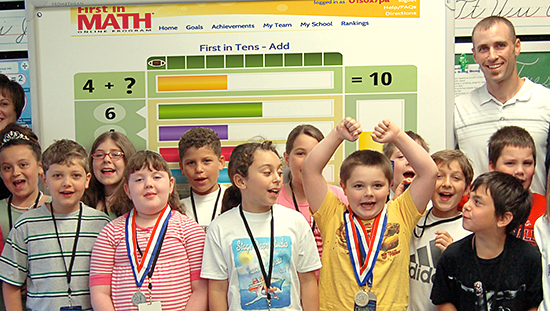Part one of a two-part series by FIM Implementation Specialist Shawn Collier.
Being a teacher can be incredibly rewarding. It can sometimes also be difficult and mentally exhausting even in the best environment. Regardless of the school environment, a program like First In Math gives all teachers the opportunity to engage students and make them aware of their strengths and weaknesses, and then provide them a way to practice specific to those needs.

Former teacher and math coach Shawn Collier feels strongly that First In Math can help students maximize their own abilities—and send them on an upward learning trajectory.
Students need an opportunity to grow relative to their own abilities—not relative to a belief on where one should be. “Start as low as you need to, go as high as you can” should be the belief conveyed in classrooms every day. As a former teacher and math specialist, it has been my experience that whenever you tell a child, ‘you should be completing this level work’ they stop; there is no reason to go beyond the expectation. However, when you say, ‘these are your abilities now, and I can’t wait to see where they are by the end of the year,’ you convey a powerful message and send the student on a completely different learning trajectory.
If a student falls behind, everything they should be doing becomes a struggle, and they begin to detach themselves from the idea that they do indeed have the ability to learn. Because First In Math offers an open palette of math, students aren’t forced into what they should be doing but are able to access content at their ability level, regardless of grade. As students demonstrate competence within a content area, the level of rigor increases to keep them reaching for that next rung on the knowledge ladder. From that point on, the path a student follows is one motivated by self-engagement and the idea of growing ‘my’ score, collecting ‘my’ achievements, and climbing as high in the rankings as possible.
A Student Goals feature is one of several ways children can track their own success and improvement. Students are also able to view their teams’ progress toward curricular goals. The fun and excitement generated when students achieve their personal goals creates an environment where students have an intrinsic drive to do their best.
Ultimately, using technology in a gaming format allows students to see pure data related to their own strengths and weaknesses. They recognize that practicing specific to their needs will allow them to grow their skills more rapidly than generically practicing. This data becomes the answer to, ‘How do I get better? A question First In Math can help each student answer for himself.